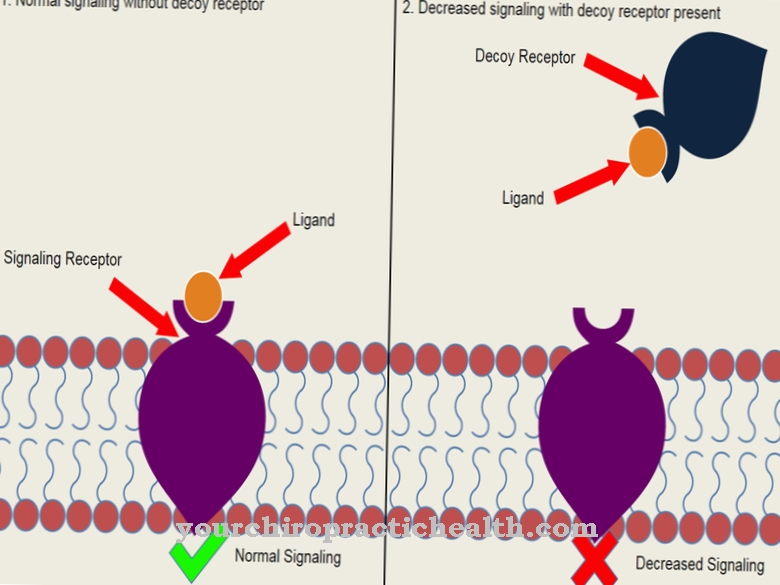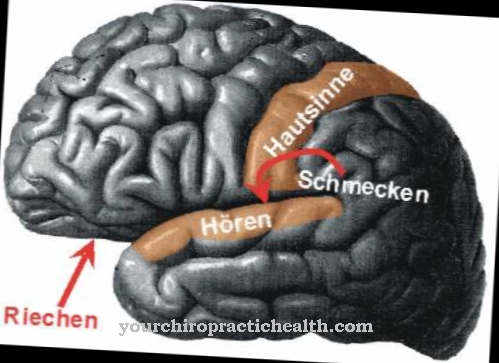The Brachiocephalic vein is a bloodstream in the human body. It is located in the chest area. In it, the blood is transported from the head, neck and arms to the heart.
What is the brachiocephalic vein?
The brachiocephalic vein is one of the vessels in the bloodstream. In the human organism, arteries and veins are differentiated from one another. Venous blood flows in the brachiocephalic vein, which is considered to be less oxygenated. It is part of the human supply system, as important messengers and nutrients are transported in it.
Via the networking of the various veins within the organism, the transport materials get from their place of origin to their destination in a very short time. The brachiocephalic vein is located in the thorax, the human chest. The messenger substances in it reach the heart from the head, neck and upper extremities. The brachiocephalic vein is a paired body vein. A distinction is made between the right brachiocephalica vein and the left brachiocephalica vein. The brachiocephalic vein is also known as the venous angle.
Doctors also speak of the anonymous vein in her case. It is a connection point at which several body veins flow. They flow together from different directions of the head in the upper area of the chest. The blood from all other veins is taken up by the brachiocephalic vein and transported on to the heart.
Anatomy & structure
The brachiocephalic vein is known as the venous angle. At this point in the human organism, various venous blood conductors from the left and right halves of the body flow together.
These are the internal jugular vein and the subclavian subclavian vein. In their previous course they have already taken in the blood of other veins. If this is not the case for anatomical reasons, the upstream veins open directly into the vein angle. This makes the vein angle in the blood vessel system an important collection point. All of the blood in the upper half of the body is pooled in the chest and passed on via the brachiocephalic vein. The brachiocephalic vein divides to the right and left. The right brachiocephalic vein is located in the right area and arises from the right sternoclavicular joint.
This is a connection between the sternum and collarbone. The vena brachiocephalica dextra takes up the vena vertebralis, the vena thyroidea inferior and the vena thoracica interna in its further course. On the left is the left brachiocephalic vein. It arises from the left sternoclavicular joint and is slightly longer. In its further course, it absorbs the blood of the vertebral vein, the internal mammary vein, the inferior thyroid vein and the intercostal vein.
Function & tasks
The task of the brachiocephalic vein is to transport venous blood from the upper body to the heart. It picks up the blood from various veins and passes it on. The brachiocephalic vein arises from the vein angle. This is an important point in the blood vessel system, as this is where the cervical and head veins come together.
The two largest veins of the head and neck area connect at the chest entrance of the thorax and become the brachiocephalic vein. This means that all of the blood flows from the head, neck and arms into the brachiocephalic vein. From there it is transported to the right heart. The brachiocephalic vein is divided into the left and right head and arm veins. This means that blood vessels are formed on the right and left from the collarbone.
The brachiocephalic vein has the task of supplying the draining venous blood to the heart. It contains important messenger substances and nutrients. In addition, dead cells from the organs are removed. The venous blood is particularly low in oxygen and can therefore quickly transport messenger and nutrients to the heart if it is supplied externally by a doctor. Veins have a thinner vessel wall than arteries. Therefore, they are often chosen for the supply of messenger substances during surgical interventions. They are also particularly helpful when blood is to be drawn.
Diseases
The brachiocephalic vein precedes the heart. This means that various pathogens such as germs, viruses or bacteria often reach the heart via them as the last resort. Under certain circumstances, they can continue to spread there.
If this happens, it can lead to a restriction of the heart muscle. His job is particularly important and has a life-sustaining function. If he suffers from lesions or functional restrictions, the organism can no longer be adequately supplied with blood. As soon as the heart stops working, a life-threatening condition exists. If heart muscle inflammation occurs, sufferers feel what is known as heartache. This is a sharp pain in the heart and it is difficult or paralyzed to breathe. In addition, there is a risk of a heart attack. This can also be fatal. Here the coronary arteries are damaged and cause complications.
If a tumor forms in the organism, cells of the tumor can reach other locations via the bloodstream. This means that they also have the option of being transported directly to the heart via the brachiocephalic vein. Cancer cells have the property that they can develop new metastases elsewhere in the body. There is no preference or aversion of the cancer cells to further spread. It is therefore possible that a body present in the organism can spread further via the brachiocephalic vein.













.jpg)

.jpg)
.jpg)











.jpg)